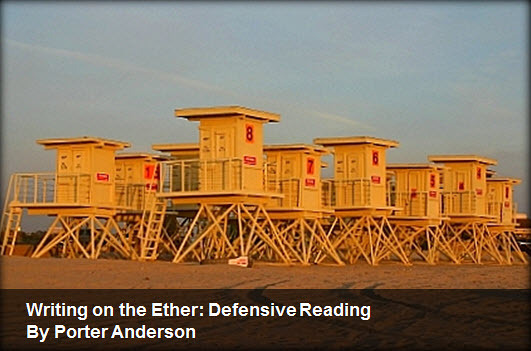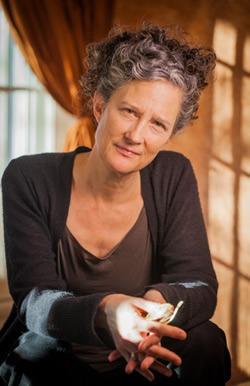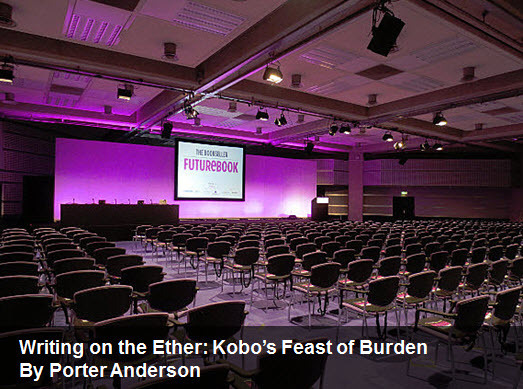Jane Friedman's Blog: Jane Friedman, page 168
December 5, 2013
Writing on the Ether: Defensive Reading
Table of Contents
Notes
Defensive Reading
“Anything Except Readerly Books”
“Print versus Digital”
“Where I Get Unhappy”
Those Lists
Notes

Hugh Howey
(1) As you may know, I’ve begun a weekly feature with The Bookseller in London, “Porter Anderson Meets,” in which I interview a newsmaker each Monday, live on Twitter, and then produce an article from the interview for The Bookseller magazine, which is on the stands each Friday. It’s a lot of fun, great working with Philip Jones, Nigel Roby and their team. And this Monday, December 9, our interviewee will be author Hugh Howey (who, with Jane Friedman, is a keynote speaker at PubSmart in April). You’re welcome to look in on us during the interview, which will start at 11 a.m. Eastern, 4 p.m. GMT in London, 8 a.m. Pacific. Our hashtag for these Monday interviews is #PorterMeets.
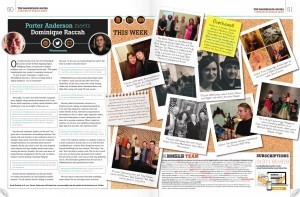 In case you’d like to subscribe to The Bookseller’s magazine, there’s information here (and a weekly Yudu rendition of the print edition that’s very good). And we had so much good material from our interview with Dominique Raccah, Sourcebooks’ founding publisher and winner of The Bookseller’s FutureBook award for Most Inspiring Digital Publishing Person, that the team in London has put together an online workup of that #PorterMeets chat you can see here.
In case you’d like to subscribe to The Bookseller’s magazine, there’s information here (and a weekly Yudu rendition of the print edition that’s very good). And we had so much good material from our interview with Dominique Raccah, Sourcebooks’ founding publisher and winner of The Bookseller’s FutureBook award for Most Inspiring Digital Publishing Person, that the team in London has put together an online workup of that #PorterMeets chat you can see here.
 (2) Cool changes are ahead for the weekly sister column to this one, Ether for Authors at Publishing Perspectives. Starting Tuesday, December 10, we’re going to sharpen things up a bit, calling it Issues on the Ether. Each Tuesday, the column will focus on a key issue (or a couple of competing ones, perhaps), and then on Wednesdays, we hope you’ll join us for a live Twitter chat about the topic(s), hosted by Ed Nawotka and me. We’re getting such robust response to the Ether that this seems a natural step to take and we’d love to have your input. Our hashtag for these Wednesday chats is #EtherIssue.
(2) Cool changes are ahead for the weekly sister column to this one, Ether for Authors at Publishing Perspectives. Starting Tuesday, December 10, we’re going to sharpen things up a bit, calling it Issues on the Ether. Each Tuesday, the column will focus on a key issue (or a couple of competing ones, perhaps), and then on Wednesdays, we hope you’ll join us for a live Twitter chat about the topic(s), hosted by Ed Nawotka and me. We’re getting such robust response to the Ether that this seems a natural step to take and we’d love to have your input. Our hashtag for these Wednesday chats is #EtherIssue.
And now…
Defensive Reading
6 Ways To Knock Your Next Guest Post Out of the Park
5 Well-Paying Jobs You Can Land With an English Degree
10 Concentration Apps That Will Help You Get Down to Business
11 Ways to Doom Your Freelance Writing Career
And maybe those 32 ways and means can supply you with the “secrets” and the “tools” to “take it to the next level” and finally achieve such a gloriously numbered state that something actually adds up to “giving 110 percent” to your goal. Not for nothing do we like those headlines:
Within the context of a Web page or Facebook stream, with their many choices, a list is the easy pick, in part because it promises a definite ending: we think we know what we’re in for, and the certainty is both alluring and reassuring.

Maria Konnikova
That’s Maria Konnikova, author of Mastermind: How To Think Like Sherlock Holmes.
In A List of Reasons Why Our Brains Love Lists at the New Yorker, she sorts through various points of research and observation to explain—very ably, I think—why these sometimes maddening list-headlines are so prevalent, especially in the work of writers blogging for other writers.
For me, the most compelling case she makes is for what we might call defensive reading. I made that up, mind you, don’t blame it on Konnikova. But here’s what she means:
The more we know about something—including precisely how much time it will consume—the greater the chance we will commit to it. The process is self-reinforcing: we recall with pleasure that we were able to complete the task (of reading the article) instead of leaving it undone and that satisfaction, in turn, makes us more likely to click on lists again—even ones we hate-read.
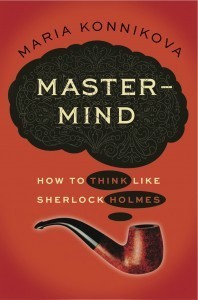 If we’re trying to defend our time (and God knows we are), we choose the apparent safety of a list to read.
If we’re trying to defend our time (and God knows we are), we choose the apparent safety of a list to read.
Konnikova does caution that “Once our attention has been ensnared, we still need to be sufficiently intrigued to read the story.”
And she cites material from the University of Athens, 2009, in which researchers “found that people preferred headlines that were both creative and uninformative, like ‘THE SMELL OF CORRUPTION, THE SCENT OF TRUTH’ or ‘FACE TO FAITH.’ They not only rated them as more interesting over-all but also indicated that they would be more likely to read the corresponding stories.”
In our constant churn of community-facing how-to pieces for writers, however, this endless conversation we keep having with ourselves, we tend to drop the allure-and-charm appeal we may offer consumers—readers. We frequently opt to speak to each other, instead, with promises of defensive reading: short, bulleted, get-in-get-out, fix-you-right-up lists.
Tips ‘n’ tricks.
Konnikova helps us understand why this works for us.
In the current media environment, a list is perfectly designed for our brain. We are drawn to it intuitively, we process it more efficiently, and we retain it with little effort.
And she hints at why, on the wider scale, it doesn’t:
That’s just fine, as long as we realize that our fast-food information diet is necessarily limited in content and nuance, and thus unlikely to contain the nutritional value of the more in-depth analysis of traditional articles that rely on paragraphs, not bullet points.
For every celebrity book bought this Christmas, the Government should buy one written by an author.
— Jonny Geller (@JonnyGeller) December 4, 2013
In an interesting parallel round of articles lately, however—in no way directly related to Konnikova’s piece, and sometimes only broadly related to each other—we can glimpse things that don’t easily “list up” the way we might like them to in publishing.
These are issues that resist both the tips ‘n’ the tricks because they make us look at unresolved, hard-to-grasp, difficult-to-handle gray areas in the digital dynamic, factors that simply aren’t going to lie down for us in nice numbered rows so we can tick them off with little square USA Today boxes and call them “done and done.”
You’re not expected to provide us with the solutions, although many of us would be really grateful if you’d do that. Just bounce off each of these quickly, simply to remind yourself that it’s not all containable, not all sortable, not all responsive to what Konnikova calls our “general tendency to categorize things.”
I’ll make it even easier for our defensive reading radar: these are just:
3 Not So Simple Issues.
All I want for Christmas is more time to read.
— Iris Blasi (@IrisBlasi) December 5, 2013
“Anything Except Readerly Books”
The digital future for narrative reading — fiction and non-fiction — is much clearer than it is for any other kind of book. Publishers of novels can apparently count on their sales shifting from print to digital and from in-store to online without losing a lot of readers…But publishers of everything else have no basis for similar confidence.
Mike Shatzkin has been working on this problem for quite awhile.
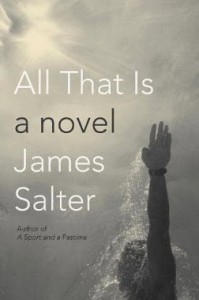 The jump from print book to ebook, as he keeps reminding us, works very well for, say, David Salter’s All That Is.
The jump from print book to ebook, as he keeps reminding us, works very well for, say, David Salter’s All That Is.
But what about The Vatican: All the Paintings? — we simply haven’t cracked that one.
In The truth is we do not yet know whether ebooks will work for anything except readerly books, Shatzkin points out that it’s not strictly a concern for illustrated books.
He echoes a point that Ether host, publishing specialist, and Scratch magazine co-creator Jane Friedman has made many times: in the age of the Internet, there’s a real question of how useful an old-style how-to book (he uses the example of David Hessayon’s gardening books) can be when all can be online, update-able and searchable.
No general publisher that I’m aware of has announced “we won’t do illustrated books anymore”. I have purely anecdotal evidence from people who once worked there and left that Random House — the one publisher I know that really tried to convert a lot of its illustrated content to ebooks over the past few years — is de-emphasizing illustrated book publishing. I have been given to understand that one of the leading art book publishers is now doing more straight text publishing, which is sensible if art books don’t port to digital.
We’ll hear more about this at Digital Book World in January. Shatzkin is again the chair of the conference and is programming it with several cross-currents. (For example, there’s a session called “Start-Ups Working with Publishing” followed by one called “Publishers Working with Start-Ups.” Nice. If you’re registering, you’re welcome to use code PORTER14 to save five percent on a full registration or Total Access pass.
There is a guy in Panera right now giving a lesson on how not to do a conference call in Panera. It's like he's giving a keynote to us.
— Rusty Shelton (@RustyShelton) November 27, 2013
“Print versus Digital”
I didn’t want to start reading print books again, but I honestly had no choice. My dog, Pixel, forced me to.

Pixel Bilton
Blaming his defenseless dog—saying that she goes crazy trying to catch the refelctions from the screens of e-readers—the New York Times’ Nick Bilton, in The Allure of the Print Book, writes of rediscovering his pleasure in print reading.
When I touched that physical book again for the first time in years, it was like the moment you hear a nostalgic song on the radio and are instantly lost in it. The feeling of a print book, with its rough paper and thick spine, is an absorbing and pleasurable experience — sometimes more so than reading on a device.
Yes, this is Mr. Let Us Use Our Devices During Takeoff and Landing, a valiant proponent of dismissing some flaky FAA rules—I’ve appreciated him fighting the good fight for us en l’air.
But this? Well, this is indicative of more slipping and sliding out there than we sometimes like to contemplate in the world of “new reading.”
As with other digital gray areas, many folks are not, actually, as settled on an e-reading future as we sometimes may like to think. Bilton:
I personally still read books on my iPad, specifically when I travel, where e-books weigh next-to-nothing and can now be read during take-off and landing. But at home on my couch, I’m definitely going to continue reading print books too, even if Pixel doesn’t like them.
Boring alert. But. Why are office chairs so expensive? It's an insane racket.
— Michael Bhaskar (@michaelbhaskar) November 29, 2013
“Where I Get Unhappy”
Publishers are innovating constantly, but subtly, internally, and on their own terms…and what is needed is a full-on skunkworks from which the conventional trade could produce new possibilities rather than tweak old ones. In any case, we haven’t seen any evidence of a disruptive change coming out of the traditional houses, and I think that’s dangerous in the longer term, both to their well-being as companies and to the trade at large.

Nick Harkaway
Author Nick Harkaway, in Of Mills and Penguins at The FutureBook, takes the news of the deal between Penguin and social-reading Readmill as a cue to wrestle with what is real innovation and what is
The stuff I see from Big 5 publishers is very much about mitigation and resilience in the face of the digital tidal wave. There’s no suggestion that anyone might try to leapfrog the digital giants’ development.
There’s an interesting melancholy to Harkaway’s piece. For one thing, he makes the case against the current idea of “social reading” (a sort of real time discussion about what’s being read) this way:
I love to be in a group, but I’m an introvert – in the modern sense that I don’t easily draw energy from the experience but expend energy on it. Reading is a place where I recharge, and the idea of having my hearthspace further drawn into the public environment is not appealing. However, I may be in the minority there.
 He makes a good point, too, just heard from author and designer Peter Meyers in that much-discussed David Streitfeld piece from the Times, Out of Print, Maybe, but Not Out of Mind. (We much-discussed it in Tuesday’s Ether for Authors: “Amazon Will Be Disrupted One Day.”)
He makes a good point, too, just heard from author and designer Peter Meyers in that much-discussed David Streitfeld piece from the Times, Out of Print, Maybe, but Not Out of Mind. (We much-discussed it in Tuesday’s Ether for Authors: “Amazon Will Be Disrupted One Day.”)
Meyers, talking in general about the sorts of innovations we see at times, is quoted saying:
A lot of these solutions were born out of a programmer’s ability to do something rather than the reader’s enthusiasm for things they need. We pursued distractions and called them enhancements.
Great. First BEA Email in the inbox this morning.
— Don Linn (@DonLinn) December 4, 2013
Harkaway is right. The several concepts of social reading (we’re not all agreed on what we mean with the term) may not be based on a strong understanding of reader interest.
And the really soft area he gets at most effectively is the fact that for all we speak of innovation, it can be very hard to be sure at times whether we’re driving it or it’s driving us.
Changes that disrupt the business model by making it more perfectly centred on delivering reading are changes that the industry should not just embrace but seek out and above all imagine before anyone else does. Publishing cannot continue to await the benevolent indulgence of digital for ever. Sooner or later, we need to see publishing setting an agenda for digital to meet rather than the other way around.
Love this quote from W.S. Merwin. pic.twitter.com/3wkbZGTavR
— Christine Sneed (@ChristineSneed) November 22, 2013
Those Lists
Something of how we talk to each other, even in how-to’s about freelancing and blogging-by-the-numbers, eventually does affect the work, of course.
Maybe the next literary “big book” isn’t going to come out with bullet points but our perfectly understandable drive for simplification in the industry! the industry! doesn’t get at the complex realities we need to contemplate.
Do you feel at times that we might be overdoing the listicles and not spending enough time wading into the tougher dilemmas facing publishing today?
When the apocalypse happens, the only things left will be roaches and my mother's four Electrolux vacuums.
— Ginger Clark (@Ginger_Clark) December 4, 2013
(At last a Meeting of The Two Jane Friedmans! Coming soon to Scratch Magazine.)
Photo Op: Jane Friedman and Jane Friedman. (Thanks for stopping by the office, @JaneFriedman!) pic.twitter.com/KqDFDLo9Yf
— Open Road Media (@OpenRoadMedia) November 26, 2013
Main image: iStockphoto – NCook
The post Writing on the Ether: Defensive Reading appeared first on Jane Friedman and was written by Porter Anderson.
December 4, 2013
4 Ways to Find Readers Who Love Your Work

Photo by Pam Hule / via Flickr
Note from Jane: Today’s guest post is an excerpt adapted from from the newly released Write. Publish. Repeat. by Sean Platt (@seanplatt) and Johnny B. Truant (@JohnnyBTruant), with David Wright. It is available for $2.99 until Saturday, and comes with a free copy of Writing Online during the launch window.
So you want to find those raving fans, right? Awesome. We’re about to give you the most boring advice possible. You’re probably going to be disappointed that we’re not going to offer you a magic way to get a ton more readers, but unfortunately that’s not how it works. Ideal fans and readers are gained a few at a time, and it takes time to build that bond, even if you experience a sudden and serendipitous burst of exposure.
For example, our friend CJ Lyons hit Amazon’s Top 5 and No. 2 on the New York Times bestseller list 1.5 years after starting indie publishing and, as a result, sold over a million books in 2 years—but that didn’t mean that her base of true, pure fans grew overnight. She has a mailing list of 15,000 highly engaged and responsive readers, but she started building that list four years before her first book was ever published.
So here are four ways to start finding and gathering your fans. This is long-term strategy.
1. Your Other Books
Bonding always takes time. Because of that, writing more is almost always the best way to find readers, and writing more is almost always the best way to turn some of those readers into true fans.
The truth is seldom glamorous. Nobody wants to hear that, but it’s a fact. People will buy bogus quick-fix solutions all day long, but few want to hear that the way to build a business or make money is to work hard for a long time and never surrender.
We run into authors all the time who say, “But I don’t want to write more books. I want to find readers for the book I already have.” This is often said desperately, and we can sympathize. Writing books, especially when you’re new to the craft, can be difficult. The last thing many new authors want to hear after the hard slog is that it’s time to turn around and do it again. But here’s the painful truth: if you have one book, your chances of making enough to live on that one book are next to nothing. Your footprint is simply too small, and you’ll get lost in the noise.
We’ve created this list in order of importance, and “your other books” is first for a reason. If you can write another book and another book, your power is multiplied with every release. The effect is geometric. After enough books and time (no promises as to number or duration), you’re likely to reach a critical mass, where you’ve cast a wide enough network that your ideal readers will find it hard to miss you. That can, in some cases, lead to the erroneously named “overnight success” some writers see after spending thousands of nights writing.
So yes, write more books. Each book is a little funnel, and it’s out there scooping a few people toward you at a time. Some will stick, and read your other works. If you actually have other works for them to read, they’ll bond with you further. If you have nothing? Well, then what reason is there for them to stick around?
For advanced writers, the “other books” lead generation method can be split in half. You may have books you sell for profit as well as those that are out there for free. The for-sale books will give you a more qualified reader (hey, they plunked down money!), but plenty of free readers will convert in time. So be sure to write more, write well, and put solid calls to action prompting your reader to join your e-mail list in the backs of all your books.
2. Friends of Your Readers
I said that we put these in order, but this one is enmeshed with and just as important as the first item. Unsurprisingly, you activate and maximize this method by writing more excellent books.
One day this summer, I was sitting at a Bob Evans with my family when my phone vibrated in my pocket. It was a text from a fan, Kyeli. I don’t have the original text message, but I kind of wish I’d thought to save it. The gist was that Kyeli had been at a Target and overheard two people talking about this ridiculous series wherein a gunslinger rides a unicorn. Kyeli was a fangirl who made a request that we include a prophetic owl in the Unicorn Western finale. She’s also really outgoing, so for a few minutes in one city, two of our fans found each other in public and convinced a third person to read the books.
People may not be discussing your books in line at major retailers yet, but hopefully they are discussing them. If they are, you’ll gain fans automatically. You want a money machine that works while you sleep? Word of mouth is that money machine. It may churn pennies rather than fat stacks at the start, but it’s out there working for you, and builds with every passing day and every fresh release.
Word of mouth is huge. If you’re an avid reader (and if you’re a writer, you’d better be an avid reader), ask yourself the last time you got a book recommendation from someone you know. Now, ask yourself the last time you were persuaded to read a book by an advertisement. Unless you’re a very odd case, you get your recommendations from friends and family, not objective third-party sources. (Book recommendations on bookseller websites are somewhere in between. They’re automated, but they only recommend your books if enough of someone else’s readers also like your books, pointing to similar reading tastes.)
Here’s how you get more word of mouth. Here’s how you get more of your readers to tell their friends that they absolutely must read your books. Here’s how you get an army of devoted readers out there doing your selling for you:
Write books that are worth sharing. Then more after that.
You have to be good enough at your craft that your books move your readers to feel something that they want others to feel. Reading takes a lot of time, and accepting a book recommendation is therefore an act of trust. Most people will only suggest books that give readers an excellent experience, not just an interesting story. You will get better at conveying emotion by writing more and practicing your craft, and will deepen that emotional connection every time you publish something new.
Now, because this post would be empty without a tiny bit of tactical talk, we’ll just add that you need as many easy entry points into your work as possible. Here are some examples:
The first “episode” in all of our series are free, and that means that when Jane tells Jerry to check us out, it’s more likely to happen because checking us out costs Jerry nothing.
We’ve also made print versions of our work as inexpensive as possible. The Unicorn Western 1 paperback costs around $4, and we can get them for $3 each. You can bet we’ll hand those suckers out like candy when people seem interested in reading them.
You also need solid call-to-actions at the back of your books to drive new readers to your list. You’re trying to capitalize on word of mouth (and hence being exposed to new readers), so make that call as compelling as possible. Ask yourself what new readers might want, then find ways to give it to them. In our call to action—which steers readers to this page—we offer free books. They can pick up as many of our free “pilot” books as they’d like.
If readers join our mailing list, we’ll give them any book from our catalog priced at $4.99 or less as a thank-you. Put yourself in a new reader’s shoes and ask yourself if that call to action would compel you—and ultimately get you that much closer to 1,000 true fans.
3. Goodreads
Goodreads is somewhere between a social network and usual word of mouth. We give Goodreads its own mention in this list because it’s far, far more aligned than Twitter, Facebook, or any other flavor of the month. People on Twitter will maybe listen to book suggestions. On Goodreads they are actively looking.
At the very least, sign up for an author account and claim your books, which may already have rankings and reviews piling high. (Goodreads readers are voracious and proactive and can list books on their own. We’ve been astonished to see the obscure stuff that has activity on Goodreads.) Once you’ve done that, you can add a bio and a photo, link your blog, post in discussions, and so on.
Don’t try to game Goodreads. The way to use it properly is to act like a human, talking to readers one-on-one or in small groups. Remember, a writer’s brand builds slowly, person by person. If you show up regularly, are polite and respectful, have an intriguing personality, and keep producing new work, you can end up with a nice network of connections. But it’s still just about groups of readers and authors, not about broadcasting or spamming your releases. Goodreads members won’t like that, and you’ll lose following that way.
One last thing to note: the rating scale at Goodreads is different than that at Amazon. It took me a while to figure this out and then to make peace with it. Your ego may take a hit when you see that your 4.5-star book on Amazon has a 3.5-star average on Goodreads, but those rankings are actually more or less equivalent. On Amazon, most reviewers will only give three stars or less if they were “meh” about a book or actively disliked it, but a 3-star review on Goodreads means that a person liked your book a lot but didn’t consider it particularly earth-shattering. A 5-star review on Goodreads is really something to celebrate.
Don’t argue with bad reviews. Accept them and move on, only engaging—maaaaybe—if the reviewer says something factually inaccurate.
4. Other Social Networks
I feel like writing this as “You can go to [current social network favorite] and [some other trendy place] to find your ideal people,” but I’ll reluctantly fill in the blanks with a few of the current contenders: Facebook, Twitter, LinkedIn … Pinterest, maybe. Whatever else.
The blasé way we’re treating the issue of social networks may seem dismissive, because everyone knows that social networks are super important and that there is magic power in the latest big thing, right? I mean, there’s course after course out there about how to use [flavor of the month network] to make your fortune, so clearly that’s where the Easy Button is.
But if you’ve read this far, you know that’s total bullshit. You also just had to sit through several “find new readers” tips that amounted to us telling you to write better and write more.
Within that set of expectations, let me tell you what online social networks are: they’re networks of people. Who are being social. Online. That’s it. The minute you start to think that you should build your business’s lead generation around Twitter, stop and ask yourself if that’s remotely intelligent. You should use Twitter, sure, but don’t you dare depend on it. It’s a tactic, and you should employ tactics as long as you aren’t putting them before strategies. The strategy here is to find people who might like your work and connect with them. Searching Twitter, using automated follow programs, and direct messaging movers and shakers are all tactics. The tactics may change, but the strategies won’t. If Twitter vanishes or if its efficacy changes, the sky won’t fall. You’ll simply find another way to find people who might like your work and connect with them, just as storytellers have been doing since the dawn of selling stories.
That said—and with the caveat that we consider the use of any given social network to be a tactic—definitely take advantage of modern tools. The short version for now is don’t overthink it. It’s not a magic bullet, and for most people, it’s firmly in the 20 percent. Don’t try to “game” Facebook for 10 hours and write for five. Writing is always more important.
A Precautionary Note
Be careful who you cultivate as fans and readers. It’s tempting to embrace an “all who will have me” sort of mentality, trying to find ways to please the maximum number of readers.
This is usually a mistake. In order to gain truly widespread approval, you must be as neutral as possible. No type of fiction is universally loved, so in order to move closer and closer to universal approval, you have to offer less and less of a “type” of fiction. Everyone is OK with a blank piece of paper, but the minute you start putting words on it, you’ll start losing the people who don’t like those words.
Writers desperate for readership (and money) will often compromise what they stand for by attempting to tell the world that “anyone with $5 to spend” is the right audience for their book. Resist this temptation. It’s fine if you end up discouraging the wrong readers by standing firm in what your books truly are, because doing so will gain you more of the right readers.
Don’t change who you are, what your books are, and what your brand represents in order to make a quick grab for an audience that doesn’t (and won’t) suit you. You will automatically grow both your truest fan base and your e-mail list by staying authentic and standing firm to your brand.
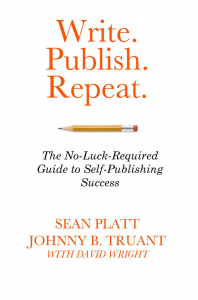 Note from Jane: If you enjoyed this post, then I highly recommend getting a copy of Write. Publish. Repeat., now on sale at Amazon for $2.99.
Note from Jane: If you enjoyed this post, then I highly recommend getting a copy of Write. Publish. Repeat., now on sale at Amazon for $2.99.
The post 4 Ways to Find Readers Who Love Your Work appeared first on Jane Friedman and was written by Sean Platt & Johnny B. Truant.
December 3, 2013
The 7-Step Business Plan for Writers
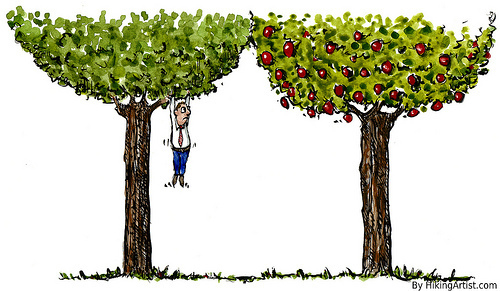
HikingArtist.com / Flickr
Today’s guest post is by author Angela Ackerman (@AngelaAckerman) of Writers Helping Writers.
As you’ve probably heard, there’s no such thing as “only being a writer” any more, and while many might not want to handle the business side of things, to give ourselves and our books the best chance of success, we must.
In May 2012, when Becca Puglisi and I self-published The Emotion Thesaurus: A Writer’s Guide to Character Expression, we had quite a few challenges. Living in different countries, we needed to create a formal partnership, set up businesses, and figure out how revenue would work. We had to learn publishing and take on marketing and promotion. Neither of us had a business or marketing background, so we relied heavily on research and intuition, and did our best to make the book discoverable. (You can read about our initial marketing plan here.)
Our unusual book on showing character emotion created buzz among writers, igniting word of mouth. Suddenly our lives went from busy to crazy as we tried to keep up with the burst of attention, writing guest posts, teaching workshops, and providing interviews. Books sales continued to strengthen, and we sold foreign rights. A few universities listed the book as required reading, and publishers began approaching us. At this point, Becca and I realized how far the book could go, but because we were being pulled in so many different directions, we didn’t know how to best take advantage of these opportunities.
The need for a business plan became our No. 1 focus. Fortunately, my husband is a management consultant who creates plans for many of his clients. With his help, we identified three areas that would help us grow in the year ahead:
improving our professional image and brand credibility: creating a website, presenting at conferences and hosting workshops
providing new product for our audience: writing two new descriptive thesaurus books
expanding into the education sector: contacting colleges and universities to spread awareness of our writing resources
The roadmap we created allowed us to avoid distractions and focus on what would help us grow.
As we near the end of the year, Becca and I now have a professional website, three writing resource books that have collectively sold nearly 50,000 copies, and we increased our credibility through speaking engagements, teaching at conferences, and hosting workshops. In the near future we are looking to create awareness of our books at the collegiate level, rounding out our business plan objectives.
Since much of our productivity and growth are a direct result of forming a business plan (and sticking to it), I want to share steps you can take to create your own.
Step 1: Brainstorm
Imagine your year ahead and what you would like to accomplish as a writer. What will help you reach your goals, whether it’s publication, releasing more books, beefing up your online visibility, or honing your craft? Write down everything that you want to accomplish, and don’t forget smaller goals, as these are necessary steppingstones to achieving larger ones.
Also, choose goals that are within your power to make happen. For example, while you might really want representation, “getting an agent” is not necessarily something you can attain yourself; the agent decides whom they represent. However, “researching and querying all suitable agents” is a goal you can set and meet.
Step 2: Find Your Themes
Read through your list and look for bigger themes. Are there several goals that fit into a similar area of focus, like platform building or writing improvement? Grab some highlighters and group these together. Then, choose a name or tag line that summarizes each theme or area of focus.
Common themes might include
Social networking improvement (platform building and connection)
Education (attending workshops, finding a critique partner, improving one’s craft, studying the industry, etc.)
Publishing (trying for an agent, working towards a traditional contract or self-publishing)
Marketing visibility (researching and implementing ads, hiring a publicist, finding one’s audience online, soliciting reviews, etc.)
Step 3: Assign Importance
Now that your goals are organized into different focus areas (themes), step back and look at the big picture. Based on where you are now, which areas are the highest priority? For example, querying agents (publication related) and honing your writing skills (education related) might both be areas you’d like to focus on, but if your writing still needs work, it will be a waste of time to query agents immediately. Likewise, if you are winning notable contests and trusted critique partners are hard-pressed to see how you can improve, likely you should make getting your work in front of agents and editors a priority.
This step involves soul-searching and honesty. Sometimes desire (wanting to be published right now, for example) can get in the way of what we actually need (to hone our craft further). To be objective, set emotion aside. Ask yourself hard questions about what your career really needs. If it helps, pretend you are advising a writer friend. If they were in your shoes, what important things would you suggest they work on to get ahead?
Step 4: Pick Two or Three Main Goals
Now comes the hard part: choosing which goals to pursue. Which two areas of focus did you mark as being the most critical? These two themes (say “Education” and “Networking”) should be the primary focus of your business plan. Pick specific goals that will help you most in these areas.
Once you choose a goal, think about the steps you must take to achieve it. For example, if your goal is to “Build a Platform” you might have action items like open a twitter account and build a following, take a class on social networking, and join a group blog. For inspiration, look at the highlighted lists you made. Chances are you’ll find smaller goals listed there that will help you achieve your larger one.
Two primary areas of focus or main goals are good for a business plan, but if you have a third area you’d like to tackle, list it as a secondary goal. Do the same exercise as above and list out tasks (action items) that must be carried out to achieve this goal.
When making these decisions, think carefully about your time. We all have roles and commitments outside of writing, and these things require a lot of energy. Business goals should be achievable, so don’t take on more than you can handle.
Step 5: Set a Timeline for Each Goal
Stick to your plan by setting timelines that fit your schedule. Becca and I chose a seasonal timeline, so we knew which goal to pursue at which time of the year. This helped us meet completion dates. If you are unsure how much time a certain task will require, set a deadline with a fallback date. This way you won’t be discouraged if you miss the initial deadline, and you’ll have a buffer if needed.
Step 6: Bring It Together in a One-Page Plan
A visual helps when it comes to following a business plan. By condensing your plan on one page, it will force you to be succinct in what must be accomplished to meet each goal. You can use a spreadsheet or table to do this (Excel, Google spreadsheet, a piece of paper, etc) or download this template. Here’s the business plan Becca and I created for ourselves:
When your spreadsheet is filled out, print and display it where you write. This will remind you of what you should be doing and help you make good use of your time.
Step 7: Commit and Challenge Yourself Daily
Once your plan is complete, stick to it. When new opportunities come up, see if they fit your plan. It’s important to take advantage of potential windfalls, but only if they further your goals and you have the time.
Before you print your business plan, type this statement in bold at the bottom: Is what I’m doing or about to do helping me achieve my goals? Before you commit time and energy to new projects, challenge yourself with this question to evaluate if it’s worthwhile.
In today’s publishing landscape, writers must become master jugglers, wearing many hats. Whether you’re published or pre-published, having a business plan is one of the smartest things you can do to keep yourself on track, maximize your time, and ensure that you reach your milestones.
The post The 7-Step Business Plan for Writers appeared first on Jane Friedman and was written by Angela Ackerman.
December 2, 2013
Writers: Look for the Majestic Silence
In the latest Glimmer Train bulletin, professor and author Carrie Brown discusses the role visual art can play in the writing life. She says:
A writer can wander the halls of a museum filled with great works of art, or flip through a book, or even a box of old photographs without being struck by any one of the images before him. But inevitably there will come a moment when the writer’s gaze stays somewhere—there’s that “majestic silence”—and at that moment, the writer knows to stand still and listen and look.
Definitely check out the entire essay, which fully introduces this thought and its context in a detailed way (with a visual!).
Also recently at Glimmer Train:
On Shortcuts by Mark Hitz
On Being Interrupted by Joan Wickersham
Click here to review the full bulletin.
The post Writers: Look for the Majestic Silence appeared first on Jane Friedman and was written by Jane Friedman.
November 28, 2013
Writing on the Ether: Kobo’s Feast of Burden
Table of Contents
The Spineless Butterball
Man of the Hour
When All the eBooks Vanished
“Active Romance”
“A One to a Zero”
The Spineless Butterball
My turkey, here on the United States’ Thanksgiving Day, is without backbone.
This is a delightful disruption of tradition, particularly for moderns who enjoy cooking but only to a point, and for those of us who fancy carving the pertinent poultry even less.
I see the boneless turkey as the biggest advance at the American holiday table since we got those awful buckles off everybody’s shoes. I give thanks for this to Butterball. Cooper the Literary Beagle and I send our annual greetings to you as we honor the Principles o’ the Pilgrims with seasonal gluttony, unimpeded by the free-range femur.
@melgue79 We are here lots of folks getting through. We were here until 10 CST last night. Happy Thanksgiving.
— Butterball (@butterball) November 28, 2013
I don't think Thanksgiving would work over here – the Mail would blame EU farming subsidies for any blessings on harvests.
— Jonny Geller (@JonnyGeller) November 28, 2013
On any typical Thanksgiving, of course, having no bone to pick with the centerpiece creature might recall certain spineless members of the industry! the industry!
Not this year.
This year, we tip our cockle hat, in fact, to Canada, which has its own Thanksgiving on the wrong date, of course—they’re Canadian, after all—but which has provided us with a remarkable moment of corporate generosity, well worth your attention.
Wow, Kobo are going to tell us what happened when the ebooks went down #fbook13
— Helena Markou (@helena_markou) November 21, 2013
Man of the Hour
[image error]
The “Big Ideas Session” at The Bookseller’s FutureBook Conference 2013. Photo: Porter Anderson
A week ago today, on the 21st of November, more than 650 of us were gathered in The Bookseller’s magenta-toned FutureBook Conference in London. Nigel Roby, Philip Jones, their efficient staff and many game speakers led us through a good and very pink day of concept and comment. A standout, in fact, was the afternoon’s “Big Ideas Session.” I’ve written about it at Publishing Perspectives in Publish Faster, Publish Less: FutureBook’s “Big Ideas.”
And like a small warm-up to the Big Ideas, a 10-minute session had been inserted into the program for 4 p.m.

Michael Tamblyn
Michael Tamblyn, content chief at Kobo, was to speak.
I was glad of this. I’d been so glad to have Tamblyn in the implications-of-self-publishing town-hall session I moderated in the Frankfurt Book Fair’s CONTEC Conference in October. He’d been terrific in that setting.
But this time, Tamblyn proceeded to outdo even his London talk’s title: “Infinite Shades of Grey: The Promise and Perils of Self-Publishing in the UK.”
I’ve held on to this until today because I’m thankful for what turned out to be a moment of real courage on Tamblyn’s part. It’s crucial that we recognize and commend him and Kobo on this because we need to encourage our other major corporate players to communicate this way.
I want to flag this for you clearly: Tamblyn broke through the usual code of corporate silence. When things go wrong in large business settings in our digital age, the common mode of response is dictated by Legal. And Legal loves to gag a workforce. No one from the company in question is to speak. No one is to talk. Not even to say things that could help the wider world understand the corporation’s difficult decisions.
What Tamblyn gave us was not only a glimpse of what his company was facing while many of us freely bad-mouthed it for the nine days of the October ordeal, but also a deeply disturbing, problematic issue we all must now take to heart very carefully.
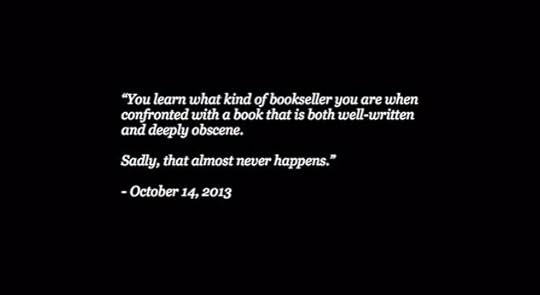
Opening image from Michael Tamblyn’s presentation at The FutureBook 2013.
When All the eBooks Vanished
Here in the States, some of our community were slow to pick up on what was going on for a very long week in the UK self-publishing community last month. (Imagine Americans not paying attention to other cultures’ affairs, I don’t know how this could have happened.)
 To refresh your memory quickly, shortly after the Frankfurt Book Fair, some tabloid reports in the UK indicated that self-published pornographic ebooks were somehow appearing alongside children’s literature on the Web site of the venerable retailer WHSmith. The (very few) authors behind these offending books apparently were gaming their metadata with titles and phrases that could cause these ebooks to be surfaced in searches using family-fare keywords. Such as “daddy.”
To refresh your memory quickly, shortly after the Frankfurt Book Fair, some tabloid reports in the UK indicated that self-published pornographic ebooks were somehow appearing alongside children’s literature on the Web site of the venerable retailer WHSmith. The (very few) authors behind these offending books apparently were gaming their metadata with titles and phrases that could cause these ebooks to be surfaced in searches using family-fare keywords. Such as “daddy.”
A major supplier of self-published ebooks to WHSmith and others, Kobo abruptly pulled all self-published titles right out of its UK store and without a word of warning.
 I remember frantic emails and DMs coming in from UK authors, asking me if I had any idea why their books were suddenly vanishing—not from their Kobo store dashboards but from the store itself. They were stunned, ticked off, mystified, and understandably so. Within hours, they had no product to sell. For its part, WHSmith had closed its own site entirely and apparently so hastily that, as The Bookseller’s Jones pointed out, their closed-until-further-notice page carried a typo for days.
I remember frantic emails and DMs coming in from UK authors, asking me if I had any idea why their books were suddenly vanishing—not from their Kobo store dashboards but from the store itself. They were stunned, ticked off, mystified, and understandably so. Within hours, they had no product to sell. For its part, WHSmith had closed its own site entirely and apparently so hastily that, as The Bookseller’s Jones pointed out, their closed-until-further-notice page carried a typo for days.
Let me allow Tamblyn to put it in his superb way from his FutureBook talk so you can get a sense for what a precipitous moment this represented:
On October 12th, Kobo had a significant catalogue of self-published titles in the UK. Tens of thousands of authors and hundreds of thousands of titles, a thriving part of our UK business. Living the dream, as they say.
On October 14th, we had zero self-published titles available in the UK from zero authors and our 300-year-old retail partner had suspended their web presence.
The purge continues. Self-published ebooks are now disappearing from the Kobo UK store http://t.co/NVBApcJowU
— Format 4 Ebook (@format4ebook) October 15, 2013
Kobo got out a couple of statements, its Kobo Writing Life head Mark Lefebvre doing all he could to characterize what was happening. In part, he wrote in one letter to Kobo’s authors (shared with me by an English writer in London):
Our goal at Kobo is not to censor material; we support freedom of expression. Further, we want to protect the reputation of self-publishing as a whole. You have our promise that we will do all we can to ensure the exceptions that have caused this current situation will not have a lasting effect on what is an exciting new channel that connects Readers to a wealth of books.
RT #Authors #Writers Did your title disappear from KOBO? This may be why. http://t.co/eoRXFYz6pk
— Elizabeth Marx (@emarxbooks) October 20, 2013
But, as is usual in these cases, the attacks came pretty quickly, most of them flying the always-busy flag of The Way It Was Handled!
We heard this when Amazon began moving against sock puppetry, you’ll recall. We heard this later, when Goodreads took action against what its regulations classify as inappropriate material on its site. In almost every case, The Way It Was Handled! is what sends the disgruntled crowds into their garages to find the pitchforks.
Handled poorly indeed, @sexandlawnovel. At least now Kobo have shown their true colours. #kobogeddon
— Rayne Hall (@RayneHall) October 21, 2013
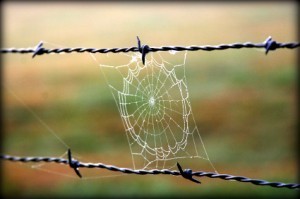
Image: iStockphoto – spfoto
For my part, I got into it in my Writer Unboxed piece on October 18, Said the Online Retailer to the Entrepreneurial Author, looking for whatever I could find on either side of the experience to get at how rough it was.
My lead sympathies were with the unsuspecting authors whose work was in no way in violation of standards that Kobo or WHSmith or the most sensitive family in what Jones termed “Middle Britain” might require. My assessment was (and is) that we don’t realize until these crises hit that our new digital sales settings are nowhere near as stable as our physical marketplaces. I wrote that the industry “needs to rethink this pattern of hurting its indispensable authors every time its sales models go pear-shaped.”
As it turns out, this was (and is) very much where Tamblyn’s and Kobo’s collective concerns were focused, as well.
What none of us knew then was that Tamblyn would come to the industry a month later with the forceful candor of the talk he gave at FutureBook.
I dropped Tamblyn a note after last week’s conference to ask if he could share with me the text of his talk. He did far more than that and, admirably, has released the transcript, key graphics, and—with The Bookseller’s collaboration—the 13-minute video of his presentation. You’ll find it all here, very appropriately on the Kobo Writing Life site.
I want to highlight the most important points we get to examine thanks to Tamblyn, and I hope you’ll find time to watch this video of his presentation, too. The laugh track on that tape is authentic. Tamblyn’s colleagues at FutureBook would continue to comment into the evening about how much they appreciated both the laughs and the look inside that difficult nine-day stretch.
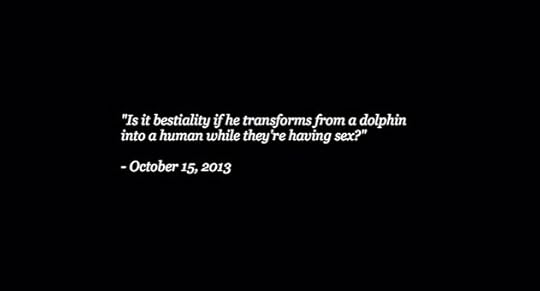
Second image from Michael Tamblyn’s presentation at The FutureBook 2013.
“Active Romance”
Our self-publishing catalog is made up of hundreds of thousands of titles.
It’s mostly fiction.
Of that fiction, much is romance.
Of that romance, some we have come to call “active romance.”
Because of its brevity, Tamblyn said, his presentation might be thought of as “a haiku about self-publishing, its risks and rewards.” The risks he refers to are not, as they appeared from the outside at the time, only on the side of the writer.
Significantly, Tamblyn acknowledges figures we’d touched on in Frankfurt: Kobo Writing life self-publishing authors contribute “10-11% of unit sales globally and all self-published titles, including various aggregators representing 15% or more” of Kobo’s total business.
Pay attention to the number of titles Tamblyn telegraphs in his preso’s graphics as being subject to review. His script calls this “several million titles.” That graphic shows 4 million. Is your head swimming yet?
You have several million titles.
An unknown number of them contain sexual content, suggestive words or adult themes.
Of those, a much, much smaller number have sexual content that is against your Terms of Use.
For both 2 and 3, some are well-labeled and categorized. Some are not.
The response dilemma:
If you remove all titles, you don’t have a business.
If you remove any titles, some people will consider you a censor.
If you remove all titles with sexual content, you are a censor.
If you don’t remove the smaller number that contravene your Terms of Use, bad PR and damage to your brand continues.
Every book you remove creates an angry author.
Every author you remove has a Twitter account.
Every journalist wants to find the worst title possible.…And even so, fundamentally, you believe that erotica and sexual content should be available.
You can see the prob! Hilarious talk from Michael Tamblyn on pitfalls of selling self-pub'd work. #fbook13 pic.twitter.com/FVkxjopQJf
— Julia Silk (@juliasilk72) November 21, 2013
The complications, while delivered with Vaudeville panache by the engaging Tamblyn, are as compelling as they are funny.
He shows what happens when you try to use automated searches for key words such as “virgin” or “screw,” “breeding” or…”cougars.” (No one asked.)
And while he has everyone laughing, you hear him start tightening the squeeze, with glancing references to digital issues we rarely admit we have not solved, such as vast, unprecedented scale.
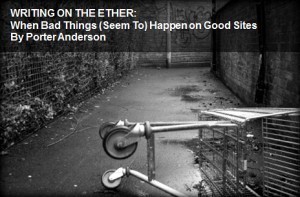 Earlier this year, when looking at Goodreads’ efforts to prevent hostile comment that transgressed its regulations, we considered here on the Ether what it must be to try to monitor a community nearing the size of the population of Australia.
Earlier this year, when looking at Goodreads’ efforts to prevent hostile comment that transgressed its regulations, we considered here on the Ether what it must be to try to monitor a community nearing the size of the population of Australia.
And now, here is Tamblyn questioning a key element of his own company’s burgeoning size:
Can one ever curate a four-million-title database? Is it folly to think that you could?
And, even more important to those of us here about the art as much as about the commerce, Tamblyn masterfully slows the delivery:
Every decision has two kinds of risk. Let the wrong book pass and you have the risk of alienating customers or bad press or breaking the law… But also the other risk, the greater danger, the possibility, however vanishingly small, that the book you are filtering out is the next Tropic of Cancer or Justine or Lolita.
Michael Tamblyn's speech at FutureBook 2013: http://t.co/PKzSWILjJD This deserves to go viral
— Philip Jones (@philipdsjones) November 27, 2013
“A One to a Zero”
Because automation wouldn’t do the job, Kobo drew together its own international flash mob of employees tasked with vetting the mountain of self-publishing called into question and yanked out of the UK store.
At one point, we had people in half a dozen countries working around the clock trying to get books back in as fast as possible. A hundred bizarre conversations. Is it bestiality if it’s sex with a shape shifter? What if both participants are supernatural? What is the age of consent in each territory we sell in? Does it matter if the character is in a coma and everything that takes place is happening in a dream? Is this book in or out?
The punitive action being taken—the part every department labelled Legal always wishes you’d just shut up about—was removal from the store of material that contravenes Kobo’s guidelines:
Some were clearly against our guidelines. Worse, some were perfectly fine, but tangled up in collections of other books requiring one-at-a-time manual review. No books were ever removed from user’s libraries, but a relatively small number of titles were removed from sale.
Every author you remove is an angry author with a twitter account as @kobo discovered during erotica gate #fbook13
— Andrew Rhomberg (@arhomberg) November 21, 2013
And in the most chilling moment we encountered in the warm pink of FutureBook, Tamblyn—still at near breakneck speed in his scant 10-minute slot—rolled out the most important thing for you to think about, for me to think about, for this industry to think about, and think again:
In the physical world, to make a book go away is a big deal — you have to burn it or seize it at the border or confiscate if from a shop in a public, visual, galvanizing spectacle. But to de-list, to deactivate, to change a one to a zero, is silent and banal. We should be loud and we should ask why. Authors should give us and every other ebook retailer a hard time when it happens. Because it is so so so much easier now to make something disappear.
Boudoir autocorrected to hoodie.
— Nico Muhly (@nicomuhly) November 24, 2013
Get what he’s saying? Our beloved, late Bradbury would not have had to turn on the flame-throwers in the reality of this future. The operatives of his societal horror could simply get it with a keystroke. Gone. As Tamblyn has it, “a one to a zero.” Your book? What book? There’s no book there anymore.
Do not fail to appreciate the corporate bravery we’re seeing here. Michael Tamblyn is the man who can stroke that key, who can turn your one into a zero, who can disappear your work in an instant—and, in fact, found himself forced to do just that, for a few days in October, with an entire national store of his company’s self-published inventory.
And he is the one who flew to London last week to tell us so.
He is the one so disturbed by this event that—for all his bravura on a conference platform (and those 200-slide presentations I made him leave behind for our panel in Frankfurt)—he really came not to make us laugh but to help us worry.
He is the one who probably mentioned the word “author” more times in that 12 minutes last week than any other speaker did all day at FutureBook. I get 16 references to the word “author” in his presentation transcript.
And when Tamblyn mentioned Kobo’s writers, he talked of them with the same respect, even awe, that you hear in Amazon’s most gifted spokespeople (I’m looking at you, Jon Fine, sorry you weren’t with us in London) and even in the sometimes huckster-ish commentary of Smashwords’ Mark Coker.
It's almost as if Einstein, Wilde & Churchill might not have been the cheesy self-help gurus that Twitter has led us to expect.
— Dave Morris (@MirabilisDave) November 27, 2013
For another Ether some time: There is a distinction in how the people of our great digital self-publishing platforms speak of authors and how the people of our major houses of legacy publishing speak of them. We need to listen for this because it involves a fundamental shift in industry dynamics about who is the customer, and are you being served?
For today, a great friend in London just noted to me that she can’t find anything coming out of America today that isn’t about giving thanks. We are that way, aren’t we? And we do have a lot to feel grateful about.
I’m thankful, our word for the day, that Tamblyn said this to us in London:
Authors will push us, will challenge boundaries, will go as far as they can go. And they should. And we will continue to grow into our role of curator. Every ebook retailer now has to wrestle with this. I’m here because we are willing to do some of it out loud, to acknowledge that choices are always being made, and be thoughtful about what they mean. And we will wrestle with the danger and significance of saying “No.” And push always for, and appreciate the power and promise of saying “Yes.”
“Willing to do some of it out loud.” You don’t have to be American to be thankful for that.
still committed to the vampire lifestyle but vampires do seem to have a lot of very complicated problems
— sarah mccarry (@therejectionist) November 28, 2013
Tamblyn wasn’t nominated this year for The FutureBook’s Most Inspiring Digital Publishing Person Award. It went, in fact, to Dominique Raccah of Sourcebooks and you’ll find my Porter Anderson Meets interview with her in Friday’s edition of The Bookseller in London. Raccah, fully worthy of the honor, gave us a grand #PorterMeets interview on Monday.
And I’ll bet Tamblyn’s name is going onto a list for next year. I hope so.
Michael Tamblyn of Kobo delivered The FutureBook’s hardest-hitting and most inspiring session of the day. In a finely arranged conference full of important and edifying detail and personality, Tamblyn seized the room’s collective intelligence with gratifying honesty, pink lightning on a bare stage.
Yep, I’m thankful for it, as I will be every time one of our newsmakers comes to us with the spine it takes to talk turkey about the digital disturbances all around us.
Here’s Tamblyn’s video. And, remember, this and his transcript and some still shots are at the Kobo Writing Life site for you. Have a look, and then tell me:
What did we learn from the Kobo-WHSmith “eroticagate” takedown of books in the UK?
What kind of question is that?
— Don Linn (@DonLinn) November 28, 2013
Michael Tamblyn, chief content officer at Kobo talks about THAT MOMENT for his business. #fbook13 pic.twitter.com/C72v8HmFBb
— Sarah Shaffi (@sarahmedway) November 21, 2013
Main image: At FutureBook 2013, the Fleming Room at Queen Elizabeth II Conference Centre, Westminster, set for the opening plenary / Porter Anderson
The post Writing on the Ether: Kobo’s Feast of Burden appeared first on Jane Friedman and was written by Porter Anderson.
November 25, 2013
Is Your Bio Working Hard or Hardly Working?
Today, over at Writer Unboxed, I discuss the importance of your bio note—that little thing that appears after stuff you write, either online or in print. I start off by observing a trend in bio notes that are very short and uninformative—mysterious, even:
As an editor and curious person, the message I take away from the writer of the short bio is: “I don’t care about, nor do I need, you or your opportunities.” … A brief bio has never stopped me from investigating a person I’m super interested in. But it’s an unnecessary stumbling block, and it’s usually the people with the super-short bios who have no websites or easy contact information.
I offer a list of 3 questions to jumpstart the bio writing process, and outline four steps to take in your overall bio strategy, which include:
Write a kitchen-sink bio.
Create a short, capsule bio.
Customize your bio across social media as needed.
Provide an easy bio version at your website for others to use.
Click here to read the full post on writing the best bio note possible.
The post Is Your Bio Working Hard or Hardly Working? appeared first on Jane Friedman and was written by Jane Friedman.
November 24, 2013
The WordPress Plug-ins I Can’t Live Without
Note from Jane: Tomorrow, I’m teaching an online 2-hour class on how to build your own author website in 24 hours or less using WordPress. This is a live screencast session where I demonstrate, step-by-step, how to set up your site. Even you can’t attend the live session, all attendees receive one year of access to the recording. I also answer all of your questions either during or after the session. Click here for more information and to register.
As every WordPress site owner knows (at least those of you who self-host), plug-ins are one of the most wonderful and useful things about WordPress. Much of the functionality you need, someone else needs, too—which means there’s probably a plug-in that provides it, without you having to hire additional help or learn how to change the WordPress code.
The big caveats:
Plug-ins can sometimes conflict with your WordPress theme. Add them carefully and one at a time, and make sure everything works the same as it did before.
Plug-ins may interfere with each other. Again, add them carefully and study the results.
Poorly written plug-ins can be buggy and present site security risks. You can avoid the “bad” ones by choosing highly rated and popular plug-ins throughout the WordPress community.
Plug-ins can make your site run more slowly, but the trade-off is usually worth it.
Without further ado, here’s my list of indispensable WordPress plug-ins.
WordPress Plug-ins I Highly Recommend
Backup Buddy. This premium (paid) plug-in allows you to easily and automatically back up your site. If you’re not backing up your site, it’s time to start—the peace of mind alone is worth it. If your site crashes or gets hacked, you can get everything back in place quickly using Backup Buddy.
Better WP Security. This free plug-in steps you through how to tighten the security of your site—to lock out hackers or intruders. Consider this plug-in essential if you don’t otherwise know how to keep your site secure or have no other preventative measures in place.
WordPress SEO by Yoast . This plug-in is like a friendly SEO expert looking over your shoulder (in a good way), to help you optimize your pages, posts, and site metadata. This plug-in is ideal even for people who don’t know what SEO means—in fact, it’s a good place to start. You can read more about it here.
Contact Form 7 . Every site should have a contact form. This is pretty much the standard that everyone uses to add one. You can make it as simple or as complex as you like, and also create multiple contact forms.
Akismet . Essential for stopping comment spam and usually pre-installed for you.
Broken Link Checker. Does exactly what it sounds like—it monitors for broken links and provides an interface to correct them.
Image Widget. This is a simple plug-in that easily allows you to add images to the widget sections of your website (usually the sidebar and footer).
Relevanssi. If you’ve been blogging for a long time, or have large volumes of content available on your site that people need to search/sort through, Relevanssi is an invaluable plug-in for helping streamline the search functionality of your website.
Social Media Widget. I use this plug-in to provide a quick, colorful button list of all the social media sites where I’m active. You can see it on this site, in the sidebar of every page.
A Few Others I Like
AddThis Social Bookmarking Widget. This adds social sharing buttons above and below blog posts and static pages. There are many, many plug-ins that can add this functionality. This is simply my preferred one, not necessarily the one for you. Find out more here.
Disqus . This is a very popular plug-in for improving the functionality and customization of the comments section on your site—something that’s a bit more robust than the native WordPress comment system. I’m a long time and loyal user, but there are many other good systems out there.
Magic Action Box Pro . This paid plug-in creates call-to-action “boxes” at specific places on your site—e.g., at the beginning and end of every blog post or static page, or wherever you manually add it. If you consistently have a range of books or products to offer your readers, you’ll love this. Try it for free by downloading the “lite” version.
Per Page Sidebars. This allows you to create a unique sidebar for every page or post on your site. Super helpful if you need that kind of customization but don’t have the money to hire a programmer.
OK, now it’s your turn. What WordPress plug-ins can’t you live without?
Note: Tomorrow, I’m teaching an online 2-hour class on how to build your own author website in 24 hours or less using WordPress. This is a live screencast session where I demonstrate, step-by-step, how to set up your site. Even you can’t attend the live session, all attendees receive one year of access to the recording. I also answer all of your questions either during or after the session. Click here for more information and to register.
The post The WordPress Plug-ins I Can’t Live Without appeared first on Jane Friedman and was written by Jane Friedman.
November 21, 2013
Writing on the Ether: Self-Publishing’s Parallel Disruptions
Table of Contents
“The Trap (for Many) of Self-Publishing”
Question: Which Event Would Mean More to You?
“A Diminishing Part of the Market”
“Increasingly confusing and complicated”
Not Ready for Publication? Not Even Ready for Editing
For Those Reading on Thursday, November 21
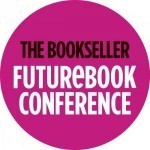 I’m in London as i write this for The Bookseller’s one-day FutureBook 2013 Conference at the Queen Elizabeth II Centre in Westminster. The event bills itself as Europe’s largest publishing conference. it is primarily industry-facing (as distinguished from, say, a conference primarily for writers). And is always lively and provocative. For Stateside folks, it starts early—3:30 a.m. Eastern and 12:30 a.m. Pacific—but it runs through about 5 p.m. London time (GMT), or noon Eastern and 9 a.m. Pacitic. If you’d like to follow some of the live tweeterie from the event, we’re hashing it #fbook13 and there’s an Epilogger capturing the busy social palaver on it.
I’m in London as i write this for The Bookseller’s one-day FutureBook 2013 Conference at the Queen Elizabeth II Centre in Westminster. The event bills itself as Europe’s largest publishing conference. it is primarily industry-facing (as distinguished from, say, a conference primarily for writers). And is always lively and provocative. For Stateside folks, it starts early—3:30 a.m. Eastern and 12:30 a.m. Pacific—but it runs through about 5 p.m. London time (GMT), or noon Eastern and 9 a.m. Pacitic. If you’d like to follow some of the live tweeterie from the event, we’re hashing it #fbook13 and there’s an Epilogger capturing the busy social palaver on it.
Dear @nationalbook, I am available for hosting.
— Carolyn Kellogg (@paperhaus) November 21, 2013
Mika almost disrupted tradition by announcing fiction before nonfiction. #gasps
— Julie Bosman (@juliebosman) November 21, 2013
“The Trap (for Many) of Self-Publishing”
The 10,000 hours required to master the complex art form of fiction is a lot to ask. Most [writers] seek validation along the way, hence the trap (for many) of self-publishing.
This is one of two parallel disruptions generated by self-publishing. And this week, they’ve come into a little clearer view of each other.

Donald Maass
It comes as news to no one in the industry! the industry! that self-publishing is controversial. We may tend, however, to think of it as controversial for that industry, while not looking at what it can mean for writers and writing. It is, in fact, a development full of argument not only for publishers but also for literature.
I sometimes wonder whether self-published authors actually read other self-published authors. There are stacks of such stuff at my agency and just an hour with them would show anyone why those novels didn’t make it with New York publishers.
This is agent Donald Maass writing about “such stuff” in one of his terrific comments at Writer Unboxed. Maass is a fellow monthly contributor with me there, and a frequent, effective responder to many of the posts.

Dave King
He was exceptionally articulate in his comment, for example, on my own post from the end of the last week, Leveling Up: In Praise of Writer Dads. And he’s no less eloquent in the comment he’s made on editor and contributor Dave King’s post, Creating a Masterpiece.
I want to use some more from Maass before I go further on this because his comments, especially paired with some others I’ll show you shortly, are some of the most potentially troubling yet.
Maass:
The road to traditional print publication is longer today but it can be done. Writers are doing it all the time, even now. True enough, publishers are highly resistant. This is the toughest market I’ve seen in my 36 years in the industry.
However, it’s tough because recession battered retailers and readers don’t have the patience to see new authors through their early training novels. They want mastery, in the modern sense, right away. Especially for $25. In a way, who can blame them?
His phrase “in the modern sense” about mastery, by the way, gets at King’s very apt point:
In the days when many professions were controlled by guilds, your masterpiece was not your best or most celebrated work. It was your first halfway decent work – the piece you presented to the guild judges to show you deserved to be named a master of your craft.
Poets give the best acceptance speeches. #nbawards
— Sarah Weinman (@sarahw) November 21, 2013
But, as King writes:
One supposed shortcut I try to steer clients away from is self-publishing. I realize that there are examples of much-rejected novels finding self-published success. I’ve also encountered writers for whom self-publishing made sense for other reasons. But for most writers, self-publishing is a distraction from the real business of writing. I certainly understand and sympathize with the temptation. If you’ve already put in a year or more of hard work creating characters you love and a plot you can recite in your sleep, the siren song of Amazon Kindle can be nearly irresistible. But while you will get something to put on your shelf, or in your e-reader, you will probably spend a lot of time and money trying to market a novel you should be rewriting.
Those words, like Maass’ comments, won’t fall easily on the ears of many. I know that, you know that. Let me give you King’s most succinct layout of his point:
You don’t become a writer by writing a novel. You become a writer by learning to write. Your novel may only be a means to that end.
And Maass, from his rejoinder:
The very conditions that make it so difficult can also be taken as a challenge. High mastery is expected of symphony musicians, ballerinas, Olympic athletes, brain surgeons and more. Why not novelists too?
Is Self-Publishing and Open Access Viable for Art Publishing? By Joy Hawley/Publishing Perspectives http://t.co/dubNTB82aN
— Jose Afonso Furtado (@jafurtado) November 21, 2013
What do you “hear” in your mind’s ear when you read King and Maass on this?
It’s easy to say that they’re condemning much of self-publishing as a dodge, isn’t it?—to say that they’re accusing self-publishers of jumping to get their work out without paying a true journeyman’s dues.
We’ve been doing a lot of time on what self-publishing means to the industry. What about what self-publishing means to the work? To the art? To literature?
What does a 12 second ringtone and a 356 page book have in common? They both cost 0.99p.
— Jonny Geller (@JonnyGeller) November 20, 2013
Question: Which Event Would Mean More to You?
We frequently hear speculation about when “a really big author” is going to cross over into self-publishing, primarily, abandoning a major house in the process. The implication in the question is generally that we’re talking about more than a “hybrid” author’s split of work between traditional and self-publishing. This question normally imagines a kind of sonic boom in the business, a huge icon’s ardent defection to self-publishing. It’s a question of industry.
But here’s what we don’t hear a lot of speculation about: When does a native self-publisher—a writer whose career is originally in self-publishing—become that “really big author”? When does it run the opposite direction, when does someone from the “indie” ranks, in other words, ascend to the status of a “big book”-writing, market-driving, industry-influencing powerhouse author?
Can we see such a phenom yet?

Hugh Howey
Hugh Howey may be among the closest so far. Not only is his WOOL (or Silo Saga) trilogy, of course, getting a lot of genuine long-distance traction (as of Frankfurt, he had 30 foreign publishers for it), but he also continues to roll out new work, much of it helping to set him and his writings in the context of success that generally helps define a major talent.
For example, he writes this week from here in Europe (still on tour for the Silo Saga) of The Apocolypse Triptych he’s producing for publication in summer 2014 with John Joseph Adams of Lightspeed, the heavily regarded and awarded science-fiction anthology.

Apocalypse Triptych artwork by Julian Faylona
Of special importance here is that Howey is electing to write material that relates to the WOOL books, “one [story] from the before, one from during, and one from after.”
The triptych has given me an excuse to revisit a place I didn’t think I would ever see again. I’m excited as hell about that.
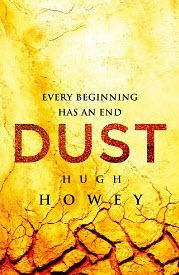 Particularly in new treatments of the Silo Saga construct, this project can represent the sort of maturing of a creative consciousness that could well, yes, mean a potential runaway some day. But clearly that’s not how Howey or anyone else goes about creative work of any kind. The intentional, self-made blockbuster is a mythic beast.
Particularly in new treatments of the Silo Saga construct, this project can represent the sort of maturing of a creative consciousness that could well, yes, mean a potential runaway some day. But clearly that’s not how Howey or anyone else goes about creative work of any kind. The intentional, self-made blockbuster is a mythic beast.
And for our purposes here, it seems interesting to note that, in general, we tend to await the “big author who goes indie,” the business move, with more anticipatory excitement than we watch for the independent author who goes big, the rise of a writer’s literary profile.
Astute analysis of Bowker's latest report on the self-publishing industry, from @MickRooney7777 http://t.co/qLPeOTEjlE
— Victoria Strauss (@victoriastrauss) November 19, 2013
“A Diminishing Part of the Market”
What publishers need to understand is that they have some built-in handicaps. One is speed. Publishers are slow compared to authors. And there’s very little a publisher can do to change that.
The second thing is that publishers need to share more of the revenue — a big chunk of the revenue. That’s two things a publisher has to compensate for if they’re going to be appealing to an author.

Mike Shatzkin
Mike Shatzkin is probably our best-known longtime industry consultant and a player in the business for more than 50 years. He seems unusually pointed about the potential upheavals of self-publishing on the business in his Jeremy Greenfield interview, The Challenge and Opportunity of Self-Published Authors for Publishers, ahead of the #DBF14 conference (January 13-15) that Shatzkin programs.
As sales move online and concentrate at Amazon, a publisher can’t really make a huge difference in Amazon compared to what an author can do on their own. So, the publisher has to make a difference in a diminishing part of the market, which is everything else.
And here he sums up the possibilities from the viewpoint of many author who may be skeptical of what traditional publishing can do for them.
If it [ebook adoption and Amazon market-share growth] stopped where we are now, with amazon getting 35% to 40% of the [print and ebook] business, and online being half the business, then you still have a pretty firm basis for a publisher to make a difference in the career of an author. But if Barnes & Noble closed or if the Amazon share goes up to 60%, it’s going to get extremely difficult for publishers to persuade authors that they’re worth employing.
@arhomberg Yes, @inkling is the title sponsor of the event and I'll be giving a keynote on *not* replicating books.
#DBW14
— Matt MacInnis (@stanine) November 11, 2013
“Increasingly confusing and complicated”

Jane Friedman
It may come as a relief to some writers to find our great colleague and Ether sponsor Jane Friedman addressing the question of self-publishing vs. traditional publishing this week by writing:
It’s an important question—one that tends to result in heated debate—but it’s becoming an increasingly confusing and complicated question to answer because:
(1) There are now many varieties of traditional publishing and self-publishing—with evolving models and varying contracts.
(2) You won’t find a universal, agreed-upon definition of what it means to “traditionally publish” or “self-publish.”
(3) It’s not an either/or proposition. You can do both.
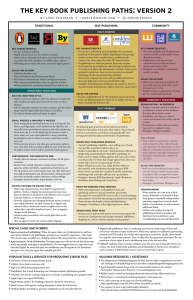 If Friedman thinks things are getting more complex, not less, then maybe the rest of us aren’t crazy, after all.
If Friedman thinks things are getting more complex, not less, then maybe the rest of us aren’t crazy, after all.
Friedman is introducing Infographic: 4 Key Book Publishing Paths, a smart second-version update to her Key Book Publishing Paths Infographic.
In consultation with self-publishing writers and observers—including those in discussion at Mick Rooney‘s Independent Publishing Magazine , she now identifies four key paths, making an original fifth path, partnership publishing, part of the traditional pathway.
Her four pathways, each fully explicated in this free infographic, are routes she characterizes as traditional; self-publishing; do-it-yourself; and community. The details in her infographic are well worth your attention.
An interesting theory on why some online stories get read, but not shared (thus don't go viral): http://t.co/nWuvrymin5 by @annaleen
— Jane Friedman (@JaneFriedman) November 14, 2013
Not Ready for Publication? Not Even Ready for Editing
Never mind publishing. What if the author’s manuscript is not ready for editing?

Carla Douglas
That’s the question posted by Carla Douglas in Self-Pubs: Is Your Editor Trying to Tell You Something? at Beyond Paper Editing.
Friedman’s infographic and good counsel are, like Shatzkin’s observations, more related to the industry questions, the state-of-the-business issues around self-publishing.
King’s points and Maass’ follow-up are closer to concerns held by many about quality and, most keenly, about authors’ own abilities to appraise and execute on their own personal levels of capability. This is where Douglas, an editor, is focused, writing:
Catherine Ryan Howard, at her self-publishing blog Catherine, Caffeinated, published the results of a poll that asked: Do you read self-published books differently? The answer? A resounding “yes.” …Howard’s respondents regard self-published books as WIPs. Ah.
If I haven't answered your email, it's because I'm in a lovely little town in Provence. Normal wifi access will resume next week. #holiday
— CatherineRyanHoward (@cathryanhoward) November 19, 2013
So remember when Maass writes, “I sometimes wonder whether self-published authors actually read other self-published authors.” Douglas is pointing out, through Howard’s unscientific but telling bit of survey work, that self-published writers may be reading each other’s work, but seeing it as works-in-progress, unfinished, fixable.
It’s doubtful that paying readers see it that way or want to.
It’s not likely at all that self-published authors might announce their work as such to readers.

Tanya Egan Gibson
And Douglas finally points us to where I want to leave you on these questions about quality and about author responsibility in self-publishing, with a piece by Tanya Egan Gibson run by Brian Krebs at Writer’s Digest.
In 10 Things Your Freelance Editor Might Not Tell You—But Should, Gibson parses the problems of premature publication and editing with easy clarity some won’t like at all.
She elaborates well on each point, I’ll just give you some highlights.
You should avoid the temptation to hire someone to edit your first draft.
An editor is not a ghostwriter.
Your editor is likely to feel more invested in the kind of book she enjoys reading.
It’s a waste of time and money to hire someone to copy edit your book before you’ve addressed all developmental and line edits.
There’s a difference between wanting to publish this book and wanting to learn how to write better.
Tinkering is not revising.
There are more points there, I hope you’ll look at them.
So there's a tweet ceiling: 1000 a day. I think @nationalbook hit it, ergo the silence. Consider me schooled, @twitter #nbawards
— Heather McCormack (@HuisceBeatha) November 21, 2013
And I hope we all can put some thought into what really comes down to two bodies of debate running in parallel about self-publishing.
One is the industry question. As Shatzkin tells us and as Friedman’s infographic reveals, the technical questions of what self-publishing and how it can affect the industry and/or be best deployed by authors in various circumstances.
The other is the literature question. Which, finally, lies closer to the readership question. As King and Maass and Douglas and Howard and Gibson all have flagged in different ways, the process of writing and editing, of conceptualizing a work and its readiness for editing, let alone publication, is being disrupted along with the industry’s traditions. This part of the field is harder to argue (no matter how you see it) because it’s never far from charges of subjective opinion, writerly professionalism, and—if you really want to clear the room—talent.
The issues of the marketplace, of publishers’ and authors’ practices within the business, will work themselves out on the floor of the plaka, as ever, although, as we’ve seen, it’s hardly a quiet process.
Our questions, though, of how self-published material is prepared, processed, appraised, and produced may be, in the long run, the more difficult.
In the traditional model, even an amateur writer, if picked up by a publisher, has had a team of professional text-wranglers standing between him and his readership.
In self-publishing, that same writer has no such experts to guide and enrich the work unless he, the writer, (a) knows he needs them and (b) takes on the responsibility to engage them before publishing.
Which disruption—of industry or literature—do you think is likeliest to prove most critical?
Big train delays on the London – Bristol line. Just sitting here among the trees.
— Kate Pullinger (@katepullinger) November 20, 2013
Main image: iStockphoto – hfng
The post Writing on the Ether: Self-Publishing’s Parallel Disruptions appeared first on Jane Friedman and was written by Porter Anderson.
November 20, 2013
The Importance of Your Book Cover: Achieving the Right Fit
Note from Jane: The following post is the first in a series that will offer tips and advice from successful authors about self-publishing, specifically those who use Barnes & Noble’s Nook Press as part of their overall sales, marketing, and distribution strategy. This series is sponsored by Nook Press, which means they have paid for these posts to run on my site. However, because I do not pay my guest bloggers, I am using the sponsorship money to pay these authors for providing guest posts. I think it’s a win-win for everyone—for the authors (they get paid), for Nook Press (they get attention), and for me (because I like to pay writers for their content whenever I can). First up in the series: Colleen Gleason (@colleengleason). Keep reading for her insights.

This post is sponsored by Nook Press.
One of the best things about working independently with NOOK is that I can change the packaging and positioning of my books at the drop of a hat. I can test things out with readers to see what sorts of covers and book descriptions work better than others.
Recently, I did a repackaging—for the third time!—of some of my romantic mysteries/gothic romances: The Shop of Shades and Secrets and The Cards of Life and Death.
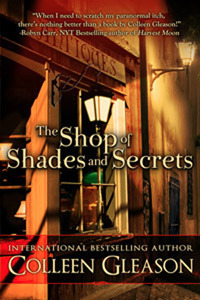
Version 1
This isn’t the first time I’ve changed my covers, but this is the first time I’ve made such a radical change. (When I repackaged my medieval romances, I stayed with the same sort of look—just different models and colors.) I spent a lot of time trying to figure out why these books weren’t doing as well as I thought they should, given the reviews and responses from readers and editors alike.
Originally, the covers looked more like a traditional gothic mystery cover—like a Barbara Michaels, Antoinette Stockenberg, or Mary Stewart book, with mysterious looking houses and dark colors. There is a ghostly/supernatural element to both books, so I thought that would be a good way to showcase that element. Those covers were beautiful, but didn’t seem to capture the attention of the market I was trying to reach: the romance market. So I had the covers tweaked to showcase the couples/romantic element.
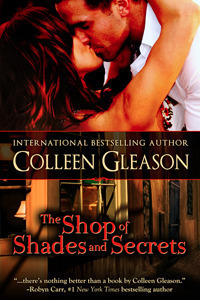
Version 2
However, the sales still weren’t where I thought they should be, given the positive reviews and excellent feedback from readers. So I started asking people—readers and other authors—what they thought about the covers. I was surprised when several people told me they thought the covers were too dark and scary looking—that the books were funny and witty, and the covers made them look too dark, especially with a title like The Cards of Life and Death.
I knew that humorous mystery and romantic mysteries were doing quite well in the market, so I started looking at the covers of those successful series. I realized that with titles that sounded so dark and ominous, I needed to have a cover that indicated the lighter elements of the stories. I found a cover artist who actually read the books before she began to work on the covers. (She also has done covers for other humorous/romantic mysteries.) She was able to bring in several important elements to a fresh, new design: the lighter colors, a more humorous feel, and something that had been missing before—the animals. In both books, there are cats (plus a dog in one) that are critical to the story.
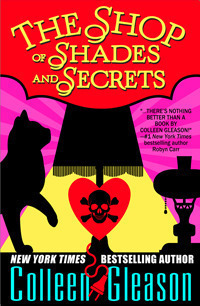
Version 3
As one might expect, it took me a while to find this designer who could come up with a fresh enough concept for the repackaging. When I initially hired a designer to do the third versions of the covers (another designer did the initial two versions), she wasn’t able to come up with a concept that fit the story, and so we parted ways. It took me another couple of months to find another, who did this final, bright, fresh version.
There are many options for cover designers, and I’ve worked with five different ones over the last few years. I use a variety because after looking at their portfolios and work samples, I can see what type or genre each artist does particularly well. Since I write in a wide variety of genres (from historical to post-apocalyptic to erotica), when I have a project that needs a cover, there’s usually one particular artist who fits best. I also change cover artists when I’m looking to repackage a book, to give it a set of fresh eyes.
When selecting a cover artist, not only do I look at the actual cover images that have been created, but I also pay attention to the artist’s use of typography. I discuss this at length in a chapter of The Naked Truth About Self-Publishing (The Indie Voice LLC, 2013), but let me say here that to me, excellent typography is probably even more important than the cover image. Good typography—meaning the correct use of fonts as well as layout—is the mark of a professional cover designer, and one that sets amateur covers apart from excellent ones.
My cover design costs range from $100 to $600, though it’s not unusual or unreasonable to pay more. The cost depends on what you’re looking for, how well known the artist is, and whether you want just the front cover or the spine and back. Some artists charge extra for the stock photos they use as well. And if you’re like me and really get into the font choices for a cover, you might have to pay extra for a specific font.
All this work was completely worth it to me, however, because I love the new covers for my gothic romances and my readers seem to also. Sales have increased several hundred percent over the last month since I unveiled the new look (complete with some advertising and social media support).

This post is sponsored by Nook Press.
The post The Importance of Your Book Cover: Achieving the Right Fit appeared first on Jane Friedman and was written by Colleen Gleason.
November 19, 2013
Infographic: 4 Key Book Publishing Paths
Earlier this year, I created an infographic about the 5 key publishing paths. I have updated this information after reading and participating in valuable discussions over at Mick Rooney’s Independent Publishing Magazine (see his response here), receiving feedback from Dan Holloway, and talking informally with writers at a range of events.
Read on for a fully revised explanation of what this is and how/why I’ve changed it. Or download it immediately as as PDF.
One of the biggest questions I hear from authors today:
Should I traditionally publish or self-publish?
It’s an important question—one that tends to result in heated debate—but it’s becoming an increasingly confusing and complicated question to answer because:
There are now many varieties of traditional publishing and self-publishing—with evolving models and varying contracts.
You won’t find a universal, agreed-upon definition of what it means to “traditionally publish” or “self-publish.”
It’s not an either/or proposition. You can do both. (See this interview with CJ Lyons.)
I spend a lot of time at writers conferences trying to clarify the pros and cons among the different publishing paths and the growing number of services available to authors. There is no one path or service that’s right for everyone; you must understand and study the changing landscape and make a choice based on long-term career goals, as well as the unique qualities of your work—not to mention your own strengths and weaknesses.
With that in mind, I’ve developed an infographic (click to download as PDF) to outline four key publishing paths, their value to authors, and the variations therein. These four paths are:
Traditional publishing: I define this as submitting your work to editors and agents (gatekeepers) and being selected for publication. Most traditional deals of the New York variety involve nationwide bookstore distribution, but one of the biggest growth areas you’ll find here is digital-only or digital-focused efforts that don’t involve print editions at all. Such opportunities may have little in common with Big Five arrangements—and that’s why I’ve intentionally put them at the bottom of the image, with a white background!—but they’re still selective. Traditional publishing authors can and should expect editorial, design, marketing, and publicity support from beginning to end.
Fully assisted self-publishing: This is what most people mean when they talk about the “vanity” publishing model, where you write a check and get your book published without lifting a finger. There’s a high risk of paying too much money for basic services, and also for purchasing services you don’t need—but it’s still a significant part of the self-publishing market, now dominated by Author Solutions in the U.S. Caveat emptor: Author Solutions is currently fighting a class-action lawsuit; they’re not warmly embraced by the indie author community. If you want a fully assisted service, explore the highly ranked firms at the Independent Publishing Magazine.
Do-it-yourself (DIY) self-publishing: This might involve either print book or e-books (or both), and I’ve been more expansive in this second version to include print-driven self-publishing options. Most authors reduce financial risk and investment involved with print by using print-on-demand technology; the most popular POD services are CreateSpace, Lightning Source, and Lulu.
Community: A growing number of publishing success stories are coming out of Wattpad and fan-fiction communities—not to mention that an incredible amount of writing and reading gets done at these sites. (Wattpad alone is closing in on 20 million users. That’s about the same size as Goodreads.) It means giving away your work, but community authors are more focused on developing a fan base, and the social aspect of reading and writing, not earnings. I’ve also added crowdfunding here, as it involves rallying your community to buy your book before it’s available (and donate funds), a model that Wattpad is now melding into its platform.
For those who are familiar with the first version of this, here’s an explanation of why certain things were changed.
Partnership publishing: This has moved under traditional publishing. I’ve decided partnership arrangements are not prevalent enough to deserve their own category. According to my definition of partnerships models, they mimic the fundamental qualities of a traditional deal—you don’t pay to publish and you seek acceptance—but there’s little or no advance and higher royalties. I do think more of this will be happening in the future. Or I hope.
Do-it-yourself (DIY) with a distributor vs. DIY direct: I separated these out before, but have combined them because the end result and even the process can be about identical. When you deal directly with retailers (Amazon, Nook, iBookstore, etc), you will earn more on royalties (since there’s no middleman/distributor); when you use a distributor, you will earn less, but may also receive some level of marketing or production assistance, depending on the service. Most people combine their own direct-to-retailer efforts with distributor efforts (Amazon + Smashwords is popular). Since DIY services work primarily on a nonexclusive basis (unless you make it restrictive by signing up for something like Kindle Select), it is quite common to mix-and-match services.
What about an agent’s role in these five models? Generally speaking, agents should serve as an author’s career manager and adviser, not as the author’s publisher. This is why I’ve included agent-assisted models in “special cases” below the chart. Still, though, when it comes to partnership publishing, agent-run outfits (e.g., Rogue Reader) are doing some of the most innovative work, and this only blurs the lines further.
Feel free to download, print, and share this infographic wherever you like. (It’s formatted to print perfectly on 11″ x 17″ or tabloid-size paper.) I will keep developing it as the publishing landscape changes, so leave a comment if you have suggestions for how to make it more helpful.
If this post was helpful to you, I hope you’ll check out my new magazine for writers—covering the business side of writing and publishing—Scratch.
For more information on getting published, visit these popular posts:
Start Here: How to Get Your Book Published
How to Publish an E-Book: Resources for Authors
10 Questions to Ask Before Committing to Any E-Publishing Service
The post Infographic: 4 Key Book Publishing Paths appeared first on Jane Friedman and was written by Jane Friedman.
Jane Friedman
- Jane Friedman's profile
- 1882 followers


